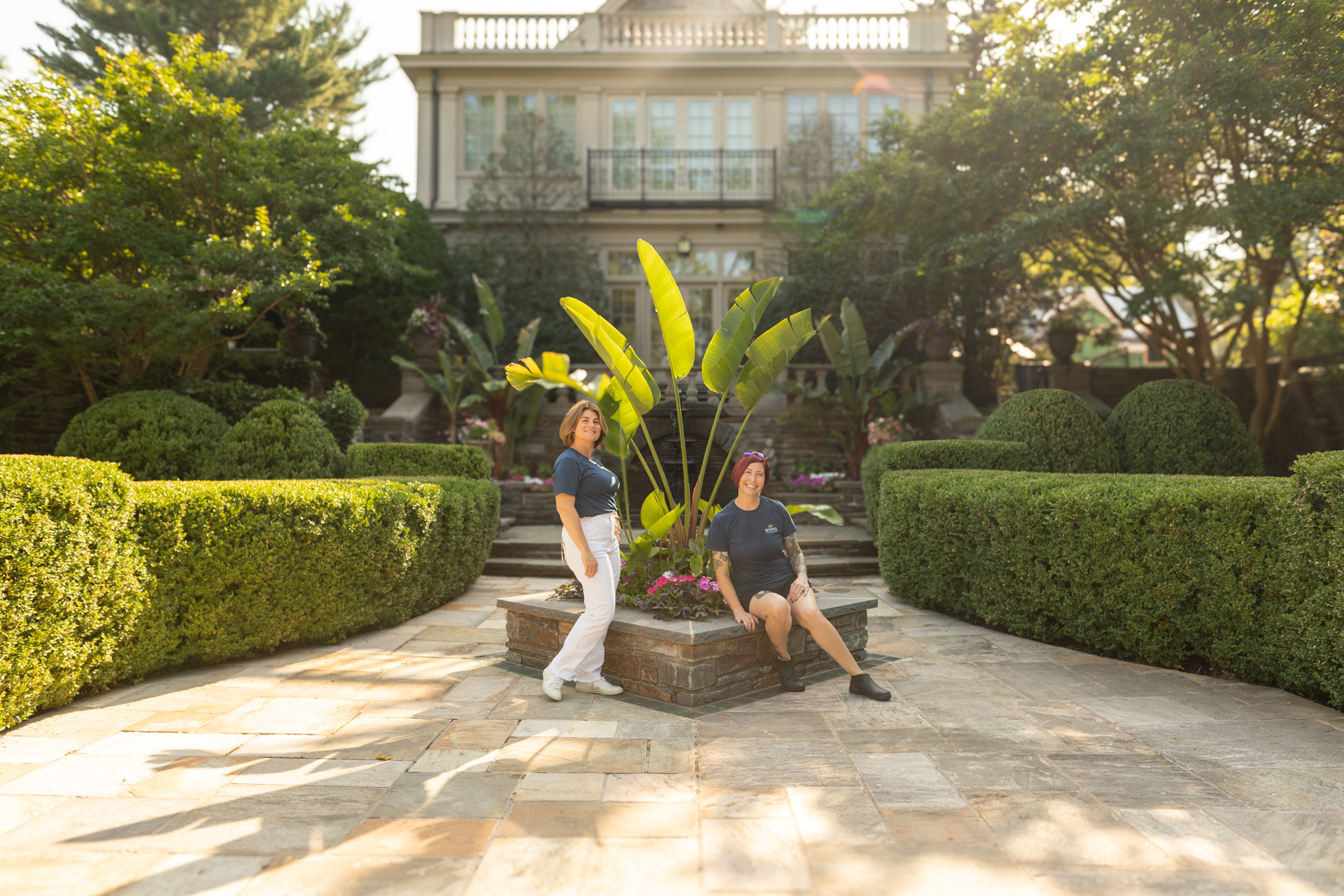We asked our landscape designers for 7 reasons a shade hosta garden would be a perfect addition to a landscape, and then provided a rough guide for our DIY audience looking to install one.
1. Versatility in Design: Hostas come in an array of colors, sizes, and textures, allowing for creative garden designs that can complement any outdoor space.
2. Low Maintenance: These hardy plants require minimal care once established, making them ideal for both novice and experienced gardeners.
3. Shade Tolerance: Hostas thrive in shaded areas where other plants might struggle, efficiently filling those dark corners with lush greenery.
4. Extended Season Interest: With foliage from spring through fall and blooms in the summer, Hostas keep your garden vibrant throughout the growing season.
5. Wildlife Attraction: The flowers of Hostas attract pollinators like bees, adding a bustling life component to your garden.
6. Soil Erosion Control: Their dense growth can help prevent soil erosion in shaded areas, protecting your garden’s terrain.
7. Easy Propagation: Hostas can be easily divided to create more plants, offering a cost-effective way to expand your garden or share with friends.
Example 500 Square Foot Shade Garden Plan for Zone 6b
Imagine a tranquil shade garden where dappled light filters through the canopy above, playing across a tapestry of greens, blues, and yellows. This 500 square foot plan blends Hostas with other shade-loving plants, creating a lush, layered look that invites exploration and relaxation.
Garden Layout:
- Backbone of Hostas: Plant a mix of large-leafed Hostas like ‘Empress Wu’ and variegated varieties such as ‘Fire and Ice’ in clusters to create a dramatic backdrop. These will form the garden’s structure.
- Mid-Layer Magic: Add mid-sized Hostas like ‘Halcyon’ with its blue leaves and ‘June’ featuring beautiful blue and yellow variegation. Intersperse with Astilbes for their feathery plumes of flowers and ferns like the Japanese Painted Fern for texture contrast.
- Front Border: Line the front with smaller Hostas like ‘Mouse Ears’ and ground covers such as Pachysandra or Sweet Woodruff. This layer ensures a full look from the ground up.
- Focal Points: Include a few shade-tolerant flowering shrubs such as Hydrangeas or Rhododendrons in strategic spots for height variation and spring blooms.
- Pathway Whispers: Create a meandering path with stepping stones surrounded by low ground covers to invite leisurely garden walks.
Planting Zones:
- Zone 1: Large Hostas and Flowering Shrubs
- Zone 2: Mid-Sized Hostas, Astilbes, and Ferns
- Zone 3: Small Hostas and Ground Covers
Additional Tips:
- Incorporate organic mulch around your plants to help retain soil moisture and reduce weed growth.
- Choose plants with different blooming times to ensure continuous color and interest.
- Remember to water your shade garden regularly, especially during dry spells, as shaded areas can deceptively lose moisture.
This garden plan for Zone 6b is designed to create a serene retreat, maximizing the beauty and potential of shaded areas through a diverse planting scheme. The combination of Hostas and companion plants offers a lush, textured garden that provides a peaceful space for relaxation and enjoyment throughout the seasons.




